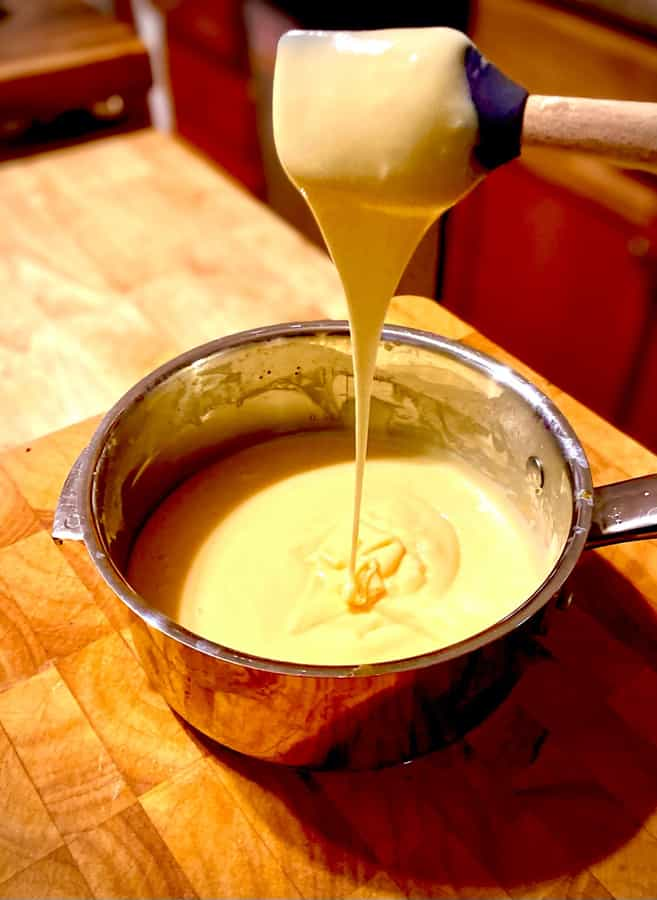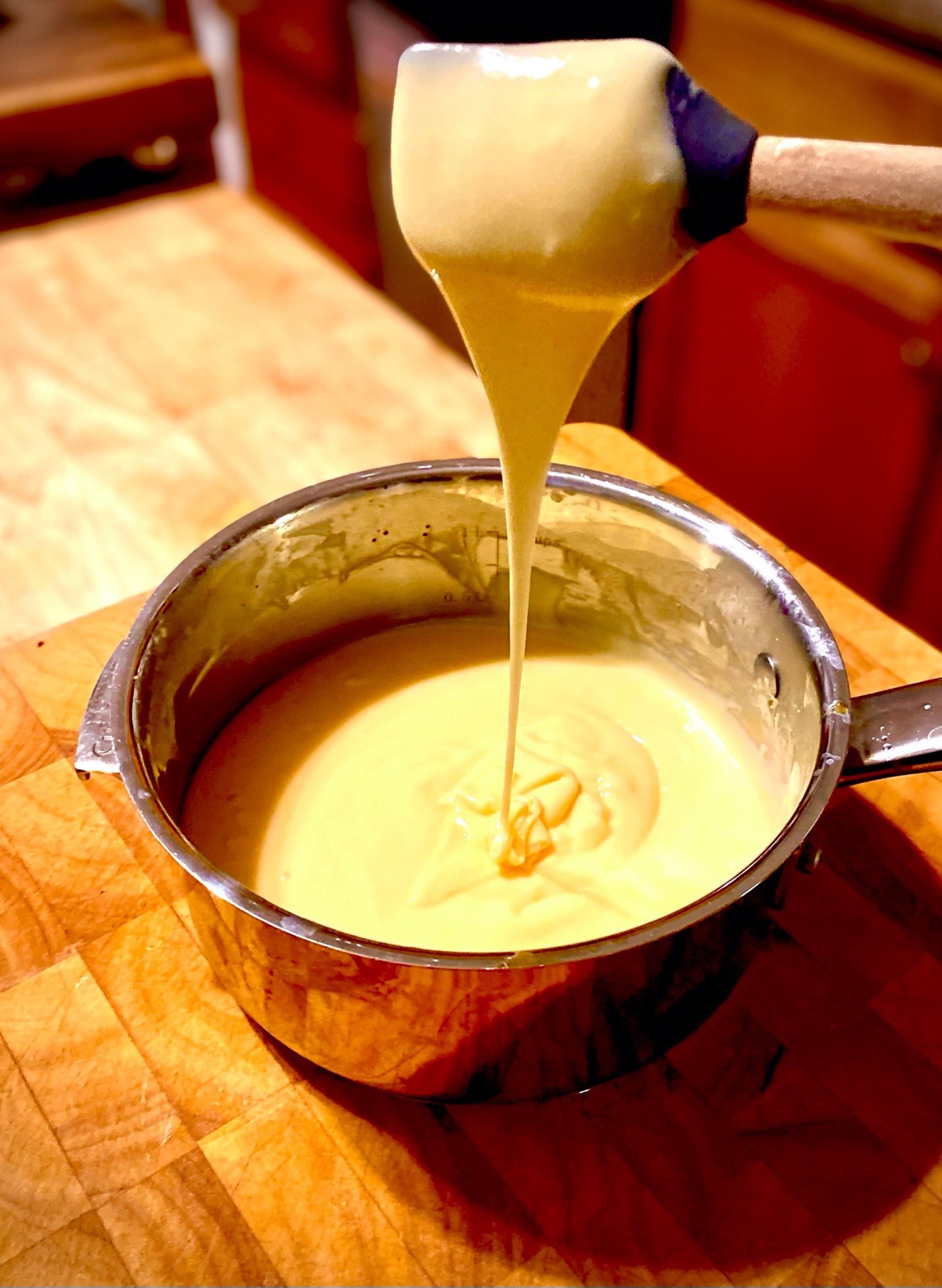Cheese Sauce 2.0: Sodium Citrate

Have you ever attempted making cheese sauce at home and found it to be a bit of a kitchen challenge? In a world where gluten allergies are on the rise, using a roux isn’t always my go to. And often those roux-based cheese sauces can get gritty and finicky.
Here I would like to talk about crafting a simple, budget-friendly cheese sauce that's not only silky-smooth but stays that way even when the heat is high. Say hello to one of my kitchen staples – sodium citrate.
 It's easy to get spooked by unfamiliar words on ingredient labels, especially those with a scientific ring. But just because a word doesn't roll off our tongues doesn't make it dangerous or carcinogenic. Take sodium citrate, for example. Not only can you make it at home, but it's also far from a chemical bogeyman. In fact, I choose to buy it because it gives me precise control in the kitchen. It’s available in many stores these days near the baking ingredients and online purchasing is always an option. I am a fan of a lot of chemical emulsifiers and stabilizers, but nothing makes a cheese sauce quite like sodium citrate.
It's easy to get spooked by unfamiliar words on ingredient labels, especially those with a scientific ring. But just because a word doesn't roll off our tongues doesn't make it dangerous or carcinogenic. Take sodium citrate, for example. Not only can you make it at home, but it's also far from a chemical bogeyman. In fact, I choose to buy it because it gives me precise control in the kitchen. It’s available in many stores these days near the baking ingredients and online purchasing is always an option. I am a fan of a lot of chemical emulsifiers and stabilizers, but nothing makes a cheese sauce quite like sodium citrate.
In my younger days, I worked under a chef who revealed a mind-blowing cheese sauce recipe – just milk, cheese, and sodium citrate. This simple concoction turned out to be the most delicious cheese sauce I'd ever experienced. We proudly dubbed it "science cheese," taking pride in the idea that chemistry could elevate our culinary creations. Little did I know, sodium citrate has a long history in the world of cheese, even appearing in many varieties we enjoy regularly (take Velveeta for example). Forget the old tricks of tossing in a slice of American cheese. With this method we cut out the middleman, delivering a luscious sauce without the hassle.
Sodium citrate isn't just a fancy name. It's a culinary superhero, playing the dual role of emulsifier and stabilizer in our cheese sauce. This dynamic duo works wonders by preventing proteins from coagulating, ensuring our sauce stays smooth and velvety even at high temperatures.
Fun fact: the chemical abbreviation for sodium citrate is Na3C6H5O7 ……… NACHO?
Cheese Sauce
Scroll down for a printable version of this recipe
Yield: 2 ½ cups
Prep time: 2 minutes
Cook time: 5 minutes
Total time: 7 minutes
1 cup whole milk
2 teaspoons sodium citrate powder
1 8 oz bag of shredded cheese (preferably softer cheese like cheddar or Colby jack)
1. Heat milk in a sauce pot on medium-low heat until white whisps of steam begin to appear from the surface of the liquid.
2. Stir in sodium citrate with a whisk to dissolve and allow the milk mixture to scald (bubbles form around the outer surface and the edges begin to creep up the sides of the pan).
3. Turn off heat and begin to stir in cheese on small handful at a time, whisking until the cheese has fully melted. Repeat the process until all the cheese is incorporated. If the sauce begins to look clumpy, turn on a low flame under the pan to help incorporate the melted cheese.
 Here I decided to make my favorite nacho combination — rendered Mexican chorizo and an assortment of pickled vegetables: jalapeño, red onion, and shredded carrot. Of course, we apply our cheese sauce plentifully and sprinkle the whole thing with chopped cilantro. This is a snack worth celebrating.
Here I decided to make my favorite nacho combination — rendered Mexican chorizo and an assortment of pickled vegetables: jalapeño, red onion, and shredded carrot. Of course, we apply our cheese sauce plentifully and sprinkle the whole thing with chopped cilantro. This is a snack worth celebrating.
 This recipe is a great template for experimentation. Milk isn’t necessary. You could easy do this with any liquid including heavy cream, beer, bone stock, or even plain water. That is the joy of sodium citrate. It can help make a delicious cheese sauce with any base you choose. The result is a cheese sauce that's not only perfect for classic nachos but also lends itself beautifully to crafting creamy mac 'n' cheese or a decadent fondue sauce. Feel free to add additions like a bit of salsa verde or some of your favorite hot sauce for a delicious kick.
This recipe is a great template for experimentation. Milk isn’t necessary. You could easy do this with any liquid including heavy cream, beer, bone stock, or even plain water. That is the joy of sodium citrate. It can help make a delicious cheese sauce with any base you choose. The result is a cheese sauce that's not only perfect for classic nachos but also lends itself beautifully to crafting creamy mac 'n' cheese or a decadent fondue sauce. Feel free to add additions like a bit of salsa verde or some of your favorite hot sauce for a delicious kick.
Let's not just see sodium citrate as a nacho enhancer but as a kitchen ally. Embracing its science is about conquering fears of "chemical" ingredients and reveling in the joy of crafting smooth, silky sauces effortlessly. I enjoy breaking norms, savoring kitchen experiments, and looking forward to the delights of experimentation. It don’t go down easy if it ain't cheesy!
If you are living gluten-free, you won't want to miss our new Hands-On Gluten-Free Comfort Food class coming up on Wednesday, February 21 at 6pm which features Skillet Mac n' Cheese.

Cheese Sauce
Ingredients
- 1 cup whole milk
- 2 teaspoons sodium citrate powder
- 1 8 oz bag of shredded cheese (preferably softer cheese like cheddar or Colby jack)
Instructions
- Heat milk in a sauce pot on medium-low heat until white whisps of steam begin to appear from the surface of the liquid.
- Stir in sodium citrate with a whisk to dissolve and allow the milk mixture to scald (bubbles form around the outer surface and the edges begin to creep up the sides of the pan).
- Turn off heat and begin to stir in cheese on small handful at a time, whisking until the cheese has fully melted. Repeat the process until all the cheese is incorporated. If the sauce begins to look clumpy, turn on a low flame under the pan to help incorporate the melted cheese.


